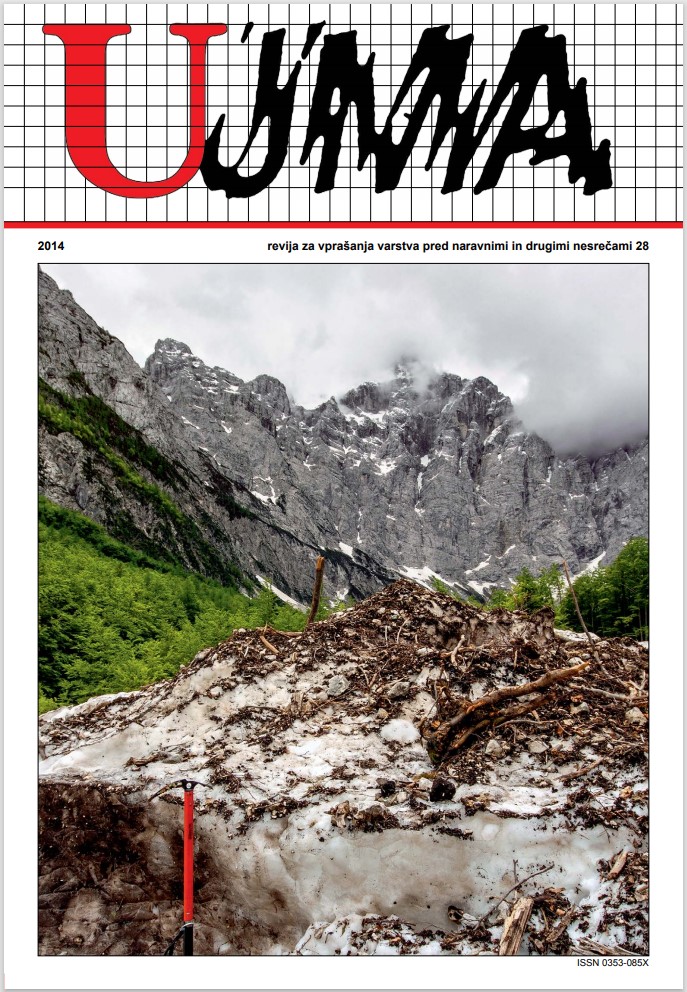USING BAYESIAN NETWORKS TO MODEL RISKS AND DEFINE SAFETY INDICATORS FOR PREVENTING INDUSTRIAL ACCIDENTS: CASE STUDY RESULTS
Abstract
The paper presents the use of risk assessment for selecting key performance indicators (KPIs) in the risk management context. The work is based on a case study of methanol unloading operation from a tanker-ship to the liquid cargo terminal at Luka Koper, d.d. By expanding on the potential major accident scenario, the consequence model was used to build the probability model (Bayesian Belief Network). The latter was related to the candidate quantitative key performance indicators that have a potential to be used in the risk management process. A sensitivity analysis (related to the values of some indicators), and related uncertainties are included. The approach has been found suitable for use in the industry. However, the conditional probabilities of the model nodes need to be set in a transparent and trustworthy manner.
References
AIChE, 1989. Guidelines for process equipment reliability data with data tables, Center for Chemical Process Safety of the AIChE, New York.
API, 2000. Risk-Based Inspection Base Resource Document, Publication 581, First Edition, American Petroleum Institute.
MIIB, 2006. Buncefield Major Incident Investigation Board, The Buncefield Incident, 11 December 2005, The final report of the Major Incident Investigation Board, Volume 1. http://www.buncefieldinvestiga tion.gov.uk (8. 7. 2014).
DNV, 2014. http://www.dnv.com/services/software/products/phast_safeti/phast/ (8. 7. 214).
HSE, 2006. Developing process safety indicators, Health and Safety Executive, HSG254.
HSE, 2012. Failure Rate and Event Data for use within Risk Assessments (28/06/2012). http://www.hse.gov.uk/landuseplanning/failure-rates.pdf (8. 7. 2014).
HUGIN EXPERT A/S, 2012. http://www.hugin.com/ (dostopano 8. 7. 2014).
iNTeg-Risk, 2011. D1.5.1 Final Type A report for ERRA D1 – T1.5.1. http://www.integrisk.eu-vri.eu (Finished Deliverables; potrebna prijava; 8. 7. 2014).
Kjaerulff U.B., Madsen A.L., 2008. Bayesian Networks and Influence Diagrams – A Guide to Construction and Analysis, Springer.
Luka Koper d. d., 2008. Varnostno poročilo za projekt podaljšanja terminala za tekoče tovore (Safety Report for Liquid Cargo Terminal extension project), Luka Koper internal document.
Luka Koper, d. d., 2010. Ocena ogroženosti Luke Koper, d. d., za vidik industrijskih nesreč na morju (Threat assessment of Luka Koper d.d. for the aspect of industrial accidents – sea), Univerza v Ljubljani, Fakulteta za pomorstvo in promet, Portorož.
OECD, 2008. Guidance on developing safety performance indicators related to chemical accident prevention, preparedness and response, guidance for industry. OECD Environment, Health and Safety Publications, Series on Chemical Accidents, No. 19, Paris.
Paris MoU, 2012, The Paris Memorandum of Understanding on Port State Control. http://www.parismou.org/ (8. 7. 2014).
Pei-Hui Lin, Daniela Hanea, Ben Ale, Simone Sillem, Coen Gulijk, Patrick Hudson, 2012, Integrating organisational factors into a BBN model of risk. In: Proce edings of PSAM11/ESREL 2012, Helsinki.
Renooij S., 2001. Probability elicitation for belief networks: issues to consider, The Knowledge Engineering Review, 16 : 3, 255–269.
Uredba, 2008. Uredba o preprečevanju večjih nesreč in zmanjševanju njihovih posledic, Ur. l. RS, št. 71/2008, 105/2010 in 36/2014.
Williams, J. C., 1992. A User Manual for the HEART, Human Reliability Assessment Method, DNV Technica.
Downloads
Published
Issue
Section
License

This work is licensed under a Creative Commons Attribution-NonCommercial-NoDerivatives 4.0 International License.
The articles are made available to the public under Creative Commons Attribution-NonCommercial-NoDerivatives 4.0 International (CC BY-NC-ND 4.0).


